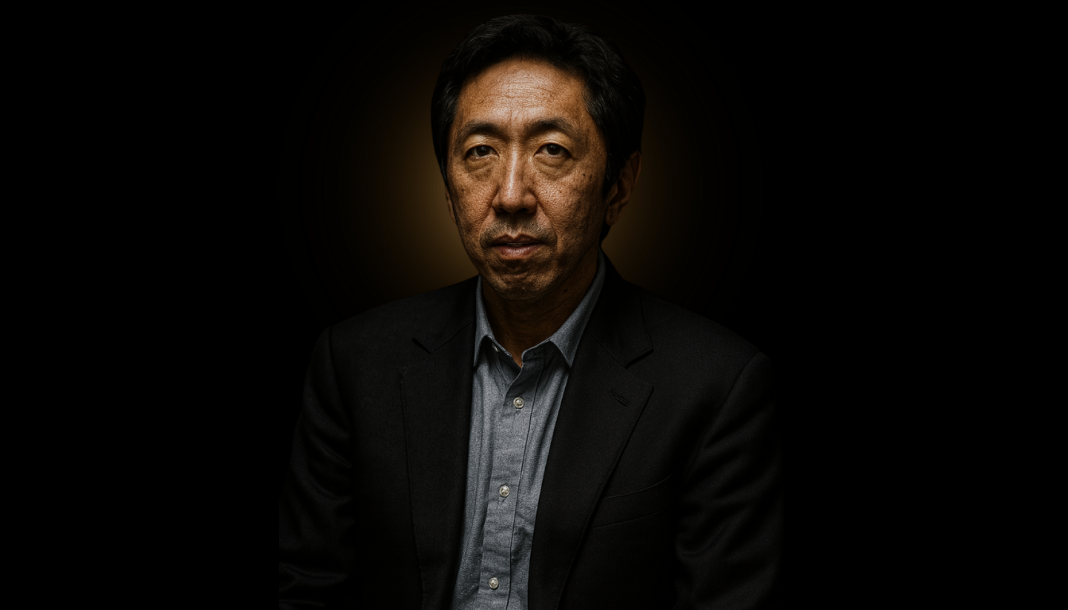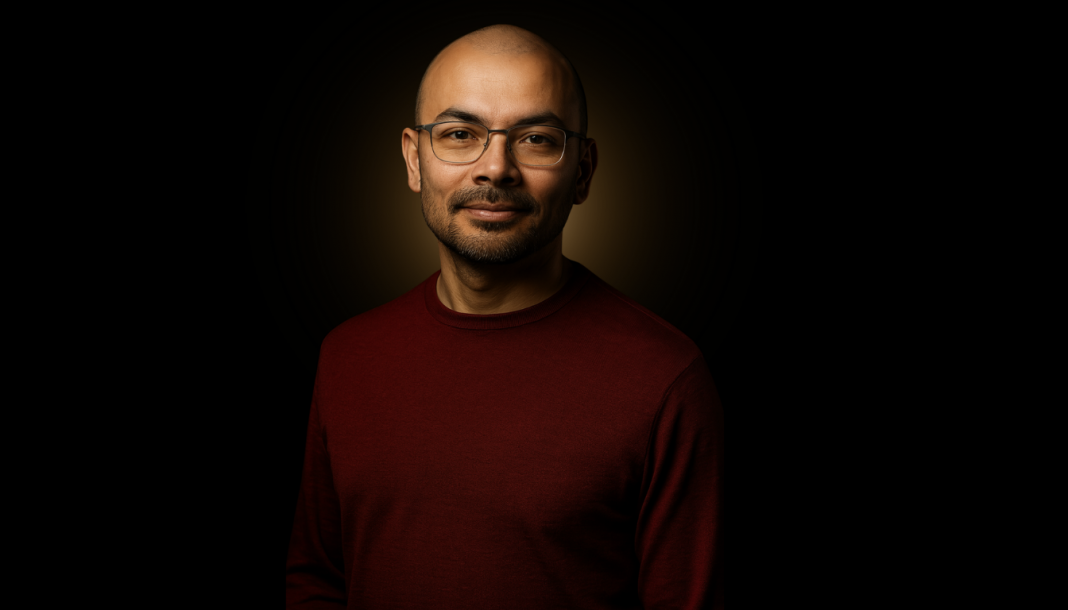In the pantheon of AI luminaries, there are foundational theorists, philosophical prophets, and pioneering researchers. And then there is Andrew Ng, the ultimate educator and pragmatist. While others were working in the rarified air of pure mathematics or contemplating the distant horizon of superintelligence, Ng was on the ground, handing out tools. He looked at the towering, ivory fortress of Artificial Intelligence, a domain reserved for PhDs in elite labs, and decided his life’s work would be to tear down the walls and give the keys to everyone.
Andrew Ng’s impact is measured not just in academic citations or corporate profits, but in the millions of careers he has launched and the countless businesses he has inspired. Through his founding role at Google Brain, his leadership at Baidu, and most profoundly, his creation of Coursera, Ng single-handedly democratized AI knowledge on a global scale. He is the evangelist who translated the arcane language of machine learning into a practical skillset for a generation of builders.
His guiding philosophy is simple and powerful: “AI is the new electricity.” It’s not a single, mystical product but a foundational utility that will transform every industry it touches. To understand Andrew Ng is to understand a mind relentlessly focused on application, access, and empowerment. His story is not about the theoretical limits of AI, but about its limitless practical potential when placed in the hands of the many.
The Making of a Practical Mind
Born in London in 1976 to parents from Hong Kong, Andrew Ng’s childhood was spent in Hong Kong and Singapore, environments known for their rigorous educational standards and emphasis on practical excellence. This upbringing instilled in him a powerful work ethic and a results-oriented mindset that would define his entire career.
His academic journey took him to the heart of computer science in America. He earned his undergraduate degree from Carnegie Mellon University, a master’s from MIT, and finally a PhD from the University of California, Berkeley, in 2002 under the guidance of the legendary machine learning researcher Michael I. Jordan. Even in his early academic work, his pragmatic streak was evident. He was a key figure in the Stanford Helicopter Project, where he and his team used reinforcement learning to teach an autonomous helicopter to perform complex acrobatic maneuvers, including flying upside down—a task notoriously difficult for even expert human pilots.
This wasn’t just a theoretical exercise; it was a demonstration of machine learning solving a tangible, real-world control problem. After joining the faculty at Stanford University in 2002, he continued to lead projects at the intersection of robotics and AI, building the Stanford Artificial Intelligence Robot (STAIR), a precursor to the robots that would one day navigate warehouses and homes. But while robotics was a passion, he began to see that the underlying learning algorithms had a far broader and more immediate potential. The world was about to be flooded with data, and he knew the tools of machine learning would be essential to make sense of it all.
The Industrial Revolution – Building Google’s Brain
In 2011, Ng initiated a clandestine research project at Google with a few collaborators, including Google Fellow Jeff Dean and research scientist Greg Corrado. The project was born from a radical idea: what if they could build a neural network of unprecedented scale, not for a specific, supervised task, but simply to see what it could learn on its own from the vast, unlabeled chaos of the internet?
This project became Google Brain. Its approach was a departure from the norm. At the time, most successful deep learning models required powerful, expensive GPUs (Graphics Processing Units). Ng and his team built their network to run on a distributed system of thousands of cheap, commodity CPUs, the standard servers that powered the rest of Google. This made it possible to build a network with over a billion connections—orders of magnitude larger than anything that had come before.
The team then set up their now-famous experiment. They didn’t tell the network what to look for. They simply fed it 10 million random, unlabeled thumbnail images from YouTube videos and let it learn. Using an “unsupervised learning” algorithm, the network’s goal was to identify recurring patterns in the data. After three days of “watching” YouTube, the team probed the network’s “neurons” to see what they had learned to detect.
They found one neuron that had become a highly reliable “cat detector.” Without ever being told what a cat was, the network had independently discovered the concept of a cat, along with other concepts like human faces and bodies. It was a stunning demonstration that deep learning at scale could find meaningful structure in messy, real-world data without human supervision.
The “cat paper” of 2012 became a landmark in the history of AI. It proved the viability of deep learning on a massive, industrial scale and solidified its importance within Google. Google Brain went on to power transformative features across the company’s products, from vastly improved speech recognition in Android to image search and language translation. Andrew Ng had proven his ability not just to conduct groundbreaking research, a la Hinton, but to build and lead a team that could deploy it to impact a billion users.
The Educational Mission – Giving AI to the World
While the Google Brain project was a monumental success, it was Ng’s next move that would cement his legacy as the great democratizer. In the fall of 2011, he decided to put his popular Stanford graduate-level machine learning course online, for free, available to anyone in the world.
The response was beyond anything he could have imagined. Over 100,000 students enrolled. They weren’t just computer science students from elite universities; they were software developers in India, doctors in Brazil, physicists in Germany, and curious hobbyists from every corner of the globe. Ng had struck a deep, global nerve. There was a ravenous appetite for this knowledge, and he had found a way to deliver it.
He realized he was onto something far bigger than a single course. This experience directly led him, along with his Stanford colleague Daphne Koller, to co-found Coursera in 2012. Their mission was radical: to partner with the world’s top universities and make their courses available to anyone, anywhere, for free or at a low cost.
Andrew Ng’s own “Machine Learning” course on the platform became a rite of passage for an entire generation. To date, it has been taken by over 5 million people. Its success lies in Ng’s unique gift as an educator. He possesses an unparalleled ability to demystify complex mathematical concepts. He breaks down intimidating topics like gradient descent, logistic regression, and neural networks using intuitive analogies, clear visualizations, and a calm, encouraging demeanor. He made people feel that they, too, could understand and build AI.
Through Coursera, Ng effectively created the global workforce that would power the AI industry for the next decade. He didn’t just teach the theory; he gave students the practical tools and programming assignments to build their own models. He empowered a legion of developers, data scientists, and product managers with a shared vocabulary and skillset, enabling the widespread adoption of AI across thousands of companies.
The Pragmatist’s Playbook – From Baidu to Landing AI
After his triumphs at Google and Coursera, Ng continued to seek out opportunities to drive the practical application of AI. In 2014, he joined the Chinese tech giant Baidu as its Chief Scientist, leading a team of over 1,300 scientists and engineers. His move to Baidu was significant, demonstrating his understanding that the future of AI was global. He helped steer Baidu’s strategy in core areas like speech recognition, autonomous driving, and natural language processing, further cementing his reputation as a leader who could operate at an immense scale.
In 2017, however, he left Baidu to embark on the next, and perhaps most focused, phase of his mission. He announced the creation of three new ventures: the Deeplearning.ai education platform, the AI Fund to support new startups, and most notably, Landing AI.
Landing AI is the perfect embodiment of Ng’s “AI is the new electricity” philosophy. The company’s mission is not to chase the holy grail of Artificial General Intelligence (AGI). Instead, its goal is to bring the power of AI to “legacy” industries—manufacturing, agriculture, healthcare, and retail. Ng recognized that while the tech giants were awash in AI talent, the rest of the economy was struggling to adopt the technology.
Landing AI focuses on solving concrete, high-value problems. A classic example is using computer vision for quality control on an assembly line. Instead of relying on human inspectors to spot tiny defects in a microchip or a textile weave—a task that is repetitive and prone to error—Landing AI helps companies build systems where a camera and an AI model can perform the inspection with superhuman accuracy and consistency, 24/7.
This focus on practical, repeatable solutions for non-tech companies is Andrew Ng’s playbook in action. It’s about delivering tangible ROI, not publishing sensational papers. He is building the bridges that allow the transformative power of AI to flow from the research labs of Silicon Valley into the factories and fields of the global economy.
The Philosophy of the Builder
Andrew Ng’s worldview is a refreshing counter-narrative to the often-feverish public discourse around AI. He is consistently less concerned with the sci-fi scenarios of sentient robots and more focused on the real-world challenges of implementation.
- Data-Centric AI: In recent years, Ng has become a major proponent of a “data-centric” approach. For decades, he argues, the field was “model-centric,” with researchers constantly trying to invent slightly better algorithms. He contends that for most practical business problems, the bottleneck isn’t the model—it’s the data. The success of a project is more dependent on having high-quality, clean, and consistently labeled data than on having the absolute latest, most complex algorithm. This is a profoundly practical insight that shifts the focus from abstract research to the messy, real-world work of data engineering.
- The Unimportance of AGI: When asked about the risks of malevolent superintelligence, Ng is often dismissive, not because he thinks it’s impossible, but because he sees it as a profound distraction. He famously said, “Worrying about AGI is like worrying about overpopulation on Mars.” There is so much immediate, tangible good to be done with today’s AI—and so many real-world problems to solve in deploying it—that he believes the philosophical debate over a hypothetical future intelligence saps energy from the vital work at hand.
- Systematic Deployment: He emphasizes the importance of a systematic, repeatable process for building AI projects. He teaches that a successful AI team needs a clear playbook: identify a valuable business problem, ensure you have access to good data, start with a simple model, and iterate. This methodical, engineering-driven approach is a far cry from the “move fast and break things” ethos of an earlier tech era.
Conclusion: The Architect of an Industry
Andrew Ng’s unique and monumental contribution to the field of AI is that of the great enabler. While Hinton, LeCun, and Li were discovering a new continent, Ng was the one who drew the maps, taught the languages, and built the ships to bring millions of settlers. He transformed machine learning from a priestly art into a popular craft.
His legacy is written in the Python code of countless developers who took his course, in the business plans of startups powered by his AI Fund, and in the increased efficiency of factories running software from Landing AI. He is the ultimate pragmatist, the master educator, and the most effective evangelist for the practical power of Artificial Intelligence. In a field full of brilliant thinkers, Andrew Ng stands out as its most influential and effective builder, the man who didn’t just imagine the future, but taught the world how to construct it.





